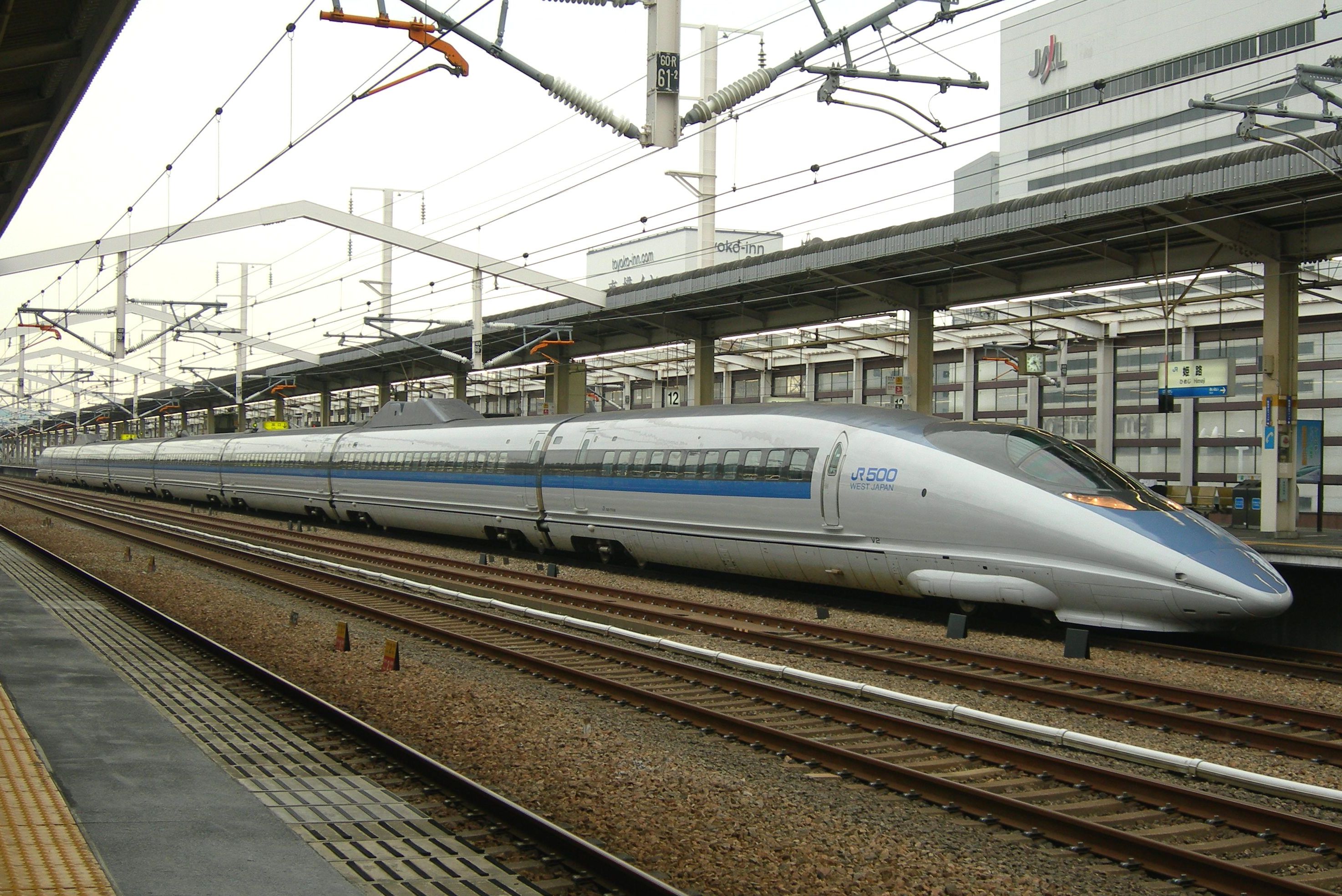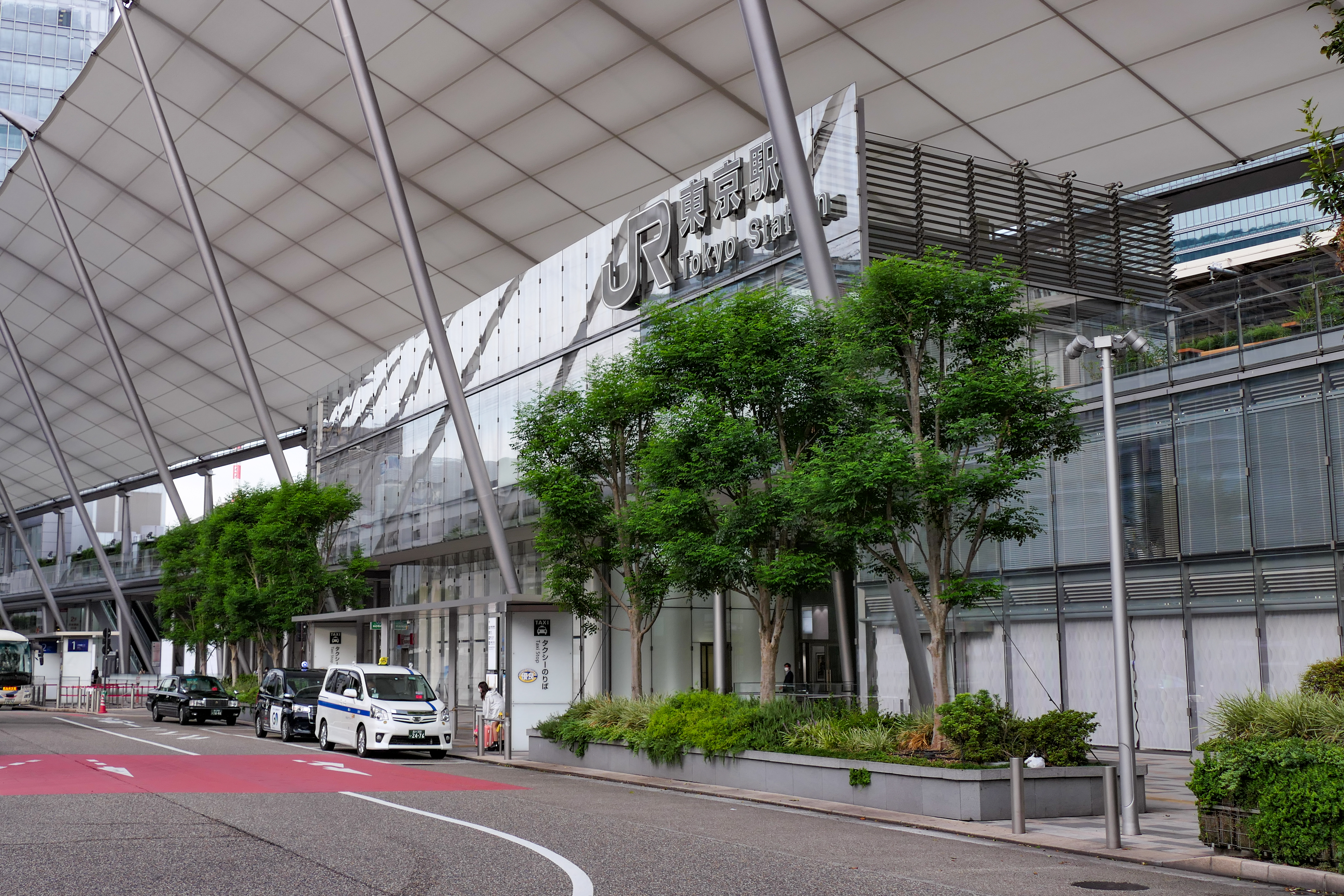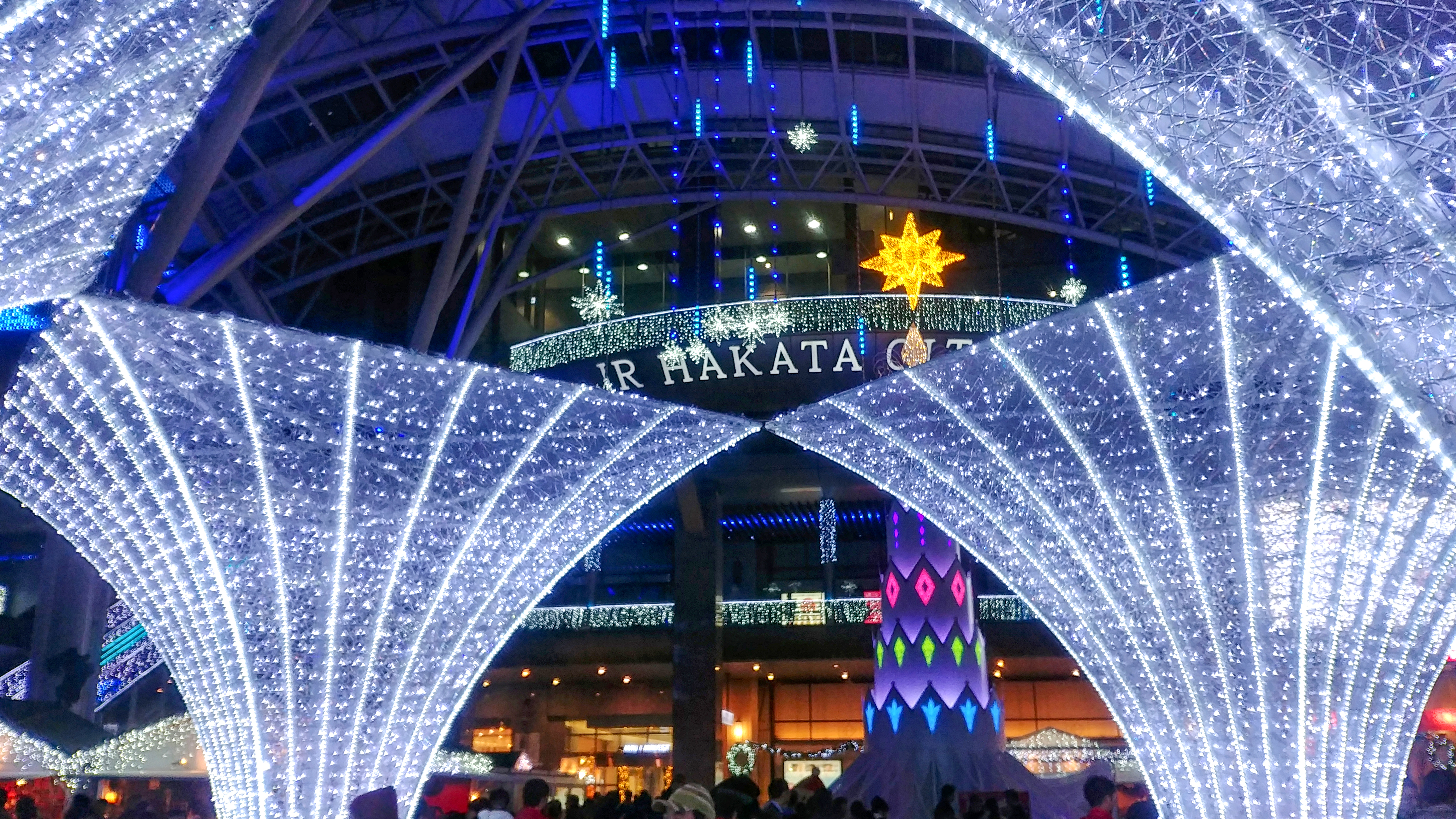|
Kodama (Shinkansen)
is one of the three train services running on the Tōkaidō and San'yō Shinkansen lines. Stopping at every station, the ''Kodama'' is the slowest Shinkansen service for trips between major cities such as Tokyo and Osaka. The Kodama trains are used primarily for travel to and from smaller cities such as Atami. Travelers between major cities generally take the '' Nozomi'' or ''Hikari'' services, which make fewer stops. Shinkansen ''Kodama'' ''Kodama'' trains generally run over shorter distances than ''Nozomi'' and ''Hikari'' trains. Typical ''Kodama'' runs include Tokyo - Nagoya / Shin-Osaka, Tokyo - Mishima / Shizuoka / Hamamatsu, Mishima / Shizuoka / Nagoya - Shin-Osaka, and Shin-Osaka / Okayama / Hiroshima - Hakata as well as some shorter late-night runs. The trainsets used for ''Kodama'' service are the same 700 series, and N700 series trains used for the ''Hikari'' and ''Nozomi'' services. Older 100 series and 300 series trains were also used for ''Kodama'' services ... [...More Info...] [...Related Items...] OR: [Wikipedia] [Google] [Baidu] |
500 Series Shinkansen
The is a Shinkansen high-speed train type operated by West Japan Railway Company (JR-West) on the Tōkaidō Shinkansen and San'yō Shinkansen lines in Japan since 1997. They were designed to be capable of but operated at , until they were finally retired from the primary '' Nozomi'' service in 2010. The trainsets were then refurbished and downgraded to the all-stations '' Kodama'' service between and . Overview The general design concept was overseen by German industrial designer Alexander Neumeister. The running gear utilizes computer-controlled active suspension for a smoother, safer ride, and yaw dampers are fitted between cars for improved stability. All sixteen cars in each original trainset were powered, giving a maximum of . Each train cost an estimated 5 billion yen, and only nine were built. It used biomimicry to reduce energy consumption by 15%, increase speeds by 10% and reduce noise levels while increasing passenger comfort. This was done by making the train's fr ... [...More Info...] [...Related Items...] OR: [Wikipedia] [Google] [Baidu] |
Hakata-Minami Station
is a railway station on the Hakata-Minami Line in Kasuga, Fukuoka, Japan. The station is operated by West Japan Railway Company (JR West). Lines The station is served by the Hakata-Minami Line from Hakata Station, and forms the only station on this 8.5 km line. Hakata-Minami Line services are classed as "Limited express", although many are actually extensions of Sanyō Shinkansen ''Hikari'' or '' Kodama'' services.JR Timetable, August 2008 issue Layout The station consists of one elevated side platform, located adjacent to Hakata Shinkansen Depot.''Japan Railfan Magazine'' March 2000 issue (No. 467): "新幹線なのに在来線", p.67 History The station opened on 1 April 1990. See also * List of railway stations in Japan The links below contain all of the 8579 railway stations in Japan. External links {{Portal bar, Japan, Trains * Railway stations Japan Japan ( ja, 日本, or , and formally , ''Nihonkoku'') is an island country in East Asia. It ... ... [...More Info...] [...Related Items...] OR: [Wikipedia] [Google] [Baidu] |
Osaka Station
is a designated city in the Kansai region of Honshu in Japan. It is the capital of and most populous city in Osaka Prefecture, and the third most populous city in Japan, following Special wards of Tokyo and Yokohama. With a population of 2.7 million in the 2020 census, it is also the largest component of the Keihanshin Metropolitan Area, which is the second-largest metropolitan area in Japan and the 10th largest urban area in the world with more than 19 million inhabitants. Osaka was traditionally considered Japan's economic hub. By the Kofun period (300–538) it had developed into an important regional port, and in the 7th and 8th centuries, it served briefly as the imperial capital. Osaka continued to flourish during the Edo period (1603–1867) and became known as a center of Japanese culture. Following the Meiji Restoration, Osaka greatly expanded in size and underwent rapid industrialization. In 1889, Osaka was officially established as a municipality. The constructi ... [...More Info...] [...Related Items...] OR: [Wikipedia] [Google] [Baidu] |
Tokyo Station
Tokyo Station ( ja, 東京駅, ) is a railway station in Chiyoda, Tokyo, Japan. The original station is located in Chiyoda's Marunouchi business district near the Tokyo Imperial Palace, Imperial Palace grounds. The newer Eastern extension is not far from the Ginza commercial district. Due to the large area covered by the station, it is divided into the Marunouchi (west) and Yaesu (east) sides in its directional signage. Served by the high-speed rail lines of the Shinkansen network, Tokyo Station is the main inter-city rail terminal in Tokyo. It is the busiest station in Japan, with more than 4,000 trains arriving and departing daily, and the fifth-busiest in Eastern Japan in terms of passenger throughput; on average, more than 500,000 people use Tokyo Station every day. The station is also served by many regional commuter lines of Japan Railways, as well as the Tokyo Metro network. Lines Trains on the following lines are available at Tokyo Station: * ** Tōhoku Shinkansen ** ... [...More Info...] [...Related Items...] OR: [Wikipedia] [Google] [Baidu] |
Japanese National Railways
The abbreviated JNR or , was the business entity that operated Japan's national railway network from 1949 to 1987. Network Railways As of June 1, 1949, the date of establishment of JNR, it operated of narrow gauge () railways in all 46 prefectures of Japan. This figure expanded to in 1981 (excluding Shinkansen), but later reduced to as of March 31, 1987, the last day of JNR. JNR operated both passenger and freight services. Shinkansen Shinkansen, the world's first high-speed railway was debuted by JNR in 1964. By the end of JNR in 1987, four lines were constructed: ; Tōkaidō Shinkansen: , completed in 1964 ; Sanyō Shinkansen: , completed in 1975 ; Tōhoku Shinkansen: , as of 1987 ; Jōetsu Shinkansen: , completed in 1982 Buses JNR operated bus lines as feeders, supplements or substitutions of railways. Unlike railway operation, JNR Bus was not superior to other local bus operators. The JR Bus companies are the successors of the bus operation of JNR. Ships JNR o ... [...More Info...] [...Related Items...] OR: [Wikipedia] [Google] [Baidu] |
Electric Multiple Unit
An electric multiple unit or EMU is a multiple-unit train consisting of self-propelled carriages using electricity as the motive power. An EMU requires no separate locomotive, as electric traction motors are incorporated within one or a number of the carriages. An EMU is usually formed of two or more semi-permanently coupled carriages, but electrically powered single-unit railcars are also generally classed as EMUs. The great majority of EMUs are passenger trains, but versions also exist for carrying mail. EMUs are popular on commuter and suburban rail networks around the world due to their fast acceleration and pollution-free operation. Being quieter than diesel multiple units (DMUs) and locomotive-hauled trains, EMUs can operate later at night and more frequently without disturbing nearby residents. In addition, tunnel design for EMU trains is simpler as no provision is needed for exhausting fumes, although retrofitting existing limited-clearance tunnels to accommodate the ... [...More Info...] [...Related Items...] OR: [Wikipedia] [Google] [Baidu] |
151 Series
The (and the earlier 151 and 161 series variants) was a Japanese limited express electric multiple unit (EMU) type operated by Japanese National Railways (JNR). Variants * 151 series * 161 series * 181 series The 151 series trains were introduced in 1958 on '' Kodama'' limited services on the Tokaido Main Line. 161 series trains were introduced in 1959 on '' Toki'' limited services on the Joetsu Line. Some 151 and 161 series cars were subsequently modified to become 181 series alongside newly built 181 series cars. File:151 Fuji Yokohama.jpg, A 151 series on a ''Fuji'' limited express service File:181 Azusa 8 Shinjuku 19750119.jpg, A JNR 181 series train on an ''Azusa'' service in January 1975 Preserved examples * KuHa 181 1: Preserved outside the Kawasaki Heavy Industries factory in Kobe, and restored in November 2016 to its original style and numbering as "KuHa 26001" * KuHa 181 45: Preserved at the Railway Museum A railway museum is a museum that explores the history ... [...More Info...] [...Related Items...] OR: [Wikipedia] [Google] [Baidu] |
Limited Express
A limited express is a type of express train service. It refers to an express service that stops at a limited number of stops in comparison to other express services on the same or similar routes. Japan The term "limited express" is a common translation of the Japanese compound noun ; literally "special express"; often abbreviated as . Although some operators translate the word differently, this section is about ''tokubetsu kyūkō'' trains in Japan regardless of the translation by the operators. This term also includes terms with ''limited express'' in them, such as . There are two types of limited express trains: intercity and commuter. The former type of limited express trains generally use long-distance coaches, equipped better than other ordinary express trains, including reserved seating, dining cars or food and beverage carts, and "green cars" (first class cars). The latter type of limited express train usually incurs no surcharge, but seating is usually first-come, f ... [...More Info...] [...Related Items...] OR: [Wikipedia] [Google] [Baidu] |
JNR 181 Kodama 20080118
The abbreviated JNR or , was the business entity that operated Japan's national railway network from 1949 to 1987. Network Railways As of June 1, 1949, the date of establishment of JNR, it operated of narrow gauge () railways in all 46 prefectures of Japan. This figure expanded to in 1981 (excluding Shinkansen), but later reduced to as of March 31, 1987, the last day of JNR. JNR operated both passenger and freight services. Shinkansen Shinkansen, the world's first high-speed railway was debuted by JNR in 1964. By the end of JNR in 1987, four lines were constructed: ; Tōkaidō Shinkansen: , completed in 1964 ; Sanyō Shinkansen: , completed in 1975 ; Tōhoku Shinkansen: , as of 1987 ; Jōetsu Shinkansen: , completed in 1982 Buses JNR operated bus lines as feeders, supplements or substitutions of railways. Unlike railway operation, JNR Bus was not superior to other local bus operators. The JR Bus companies are the successors of the bus operation of JNR. Ships JNR op ... [...More Info...] [...Related Items...] OR: [Wikipedia] [Google] [Baidu] |
Kyushu
is the third-largest island of Japan's five main islands and the most southerly of the four largest islands ( i.e. excluding Okinawa). In the past, it has been known as , and . The historical regional name referred to Kyushu and its surrounding islands. Kyushu has a land area of and a population of 14,311,224 in 2018. In the 8th-century Taihō Code reforms, Dazaifu was established as a special administrative term for the region. Geography The island is mountainous, and Japan's most active volcano, Mount Aso at , is on Kyushu. There are many other signs of tectonic activity, including numerous areas of hot springs. The most famous of these are in Beppu, on the east shore, and around Mt. Aso in central Kyushu. The island is separated from Honshu by the Kanmon Straits. Being the nearest island to the Asian continent, historically it is the gateway to Japan. The total area is which makes it the 37th largest island in the world. It's slightly larger than Taiwan island . ... [...More Info...] [...Related Items...] OR: [Wikipedia] [Google] [Baidu] |
Hakata Station
is a major railway station in Hakata-ku, Fukuoka, Japan. It is the largest and busiest railway terminal in Kyushu, and is a gateway to other cities in Kyushu for travelers coming from Honshu by rail travel. The San'yō Shinkansen from Osaka ends at this station. The station was rebuilt in 2011. The main building was demolished and a new, larger station building, as well as office buildings and new platforms, was constructed. The station reconstruction project was initiated specifically for the Kyushu Shinkansen extension from Hakata to Shin-Yatsushiro Station which continues southward through its existing route to Kagoshima-Chūō Station. The new station building has a Hankyu Department Store, its first branch store in Kyushu, as a tenant, as well as other first-in-Kyushu branch retailers including Tokyu Hands. Lines * **Fukuhoku-Yutaka Line **Kagoshima Main Line **Kyushu Shinkansen * **San'yō Shinkansen **Hakata-Minami Line * ** Platforms JR F ... [...More Info...] [...Related Items...] OR: [Wikipedia] [Google] [Baidu] |
Kokura Station
in Kokurakita-ku is the main railway station in Kitakyushu, Japan. It is part of the JR Kyushu network and the San'yō Shinkansen stops here. It is the second largest station in Kyushu with 120,000 users daily. In the late 1990s, the Kokura station area was expanded and remodelled. JR lines * Kagoshima Main Line * San'yō Shinkansen * Nippō Main Line * Hitahikosan Line JR limited express trains * San'yō Shinkansen '' Nozomi'', ''Hikari'', and '' Kodama'' ( - - ) * San'yō Shinkansen ''Mizuho'', and ''Sakura'' ( - ( by Kyushu Shinkansen) * ''Sonic'' (Hakata - //) * '' Nichirin Seagaia'' (Hakata - ) * '' Kirameki'' (Mojikō/Kokura - Hakata) Monorail * Kitakyushu Monorail Tracks History * April 1, 1891: Opened by the private company Kyushu Tetsudo in front of Kokura Castle. * July 1, 1907: Brought under state control. * March 1, 1958: Reconstructed 700 meters east of original location (the former station site is now known as Nishi ("West") Kokura). ... [...More Info...] [...Related Items...] OR: [Wikipedia] [Google] [Baidu] |








